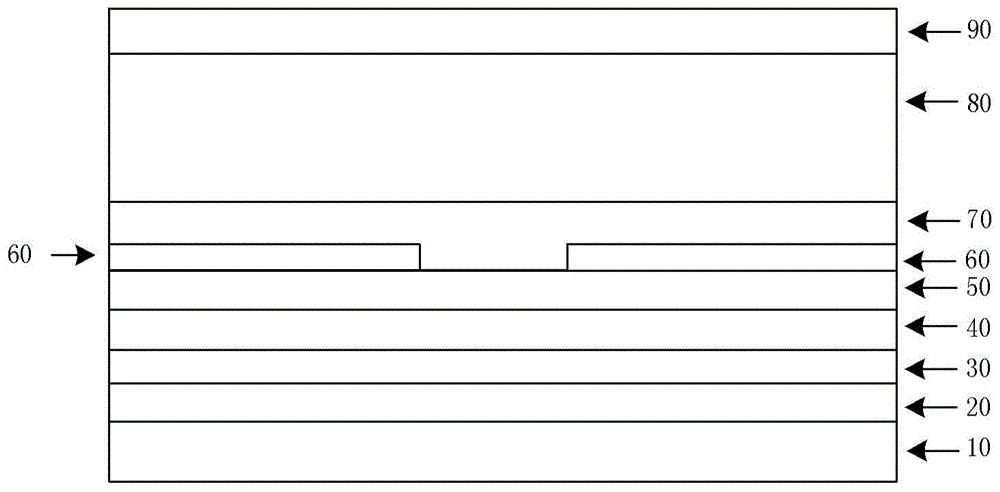Transistor laser, and manufacturing method thereof
A technology for transistor lasers and manufacturing methods, which is applied to semiconductor lasers, lasers, laser components, etc., can solve problems such as carrier non-radiative recombination, device performance fluctuations, and material quality degradation in active regions, so as to reduce non-radiative recombination , the effect of improving device performance
- Summary
- Abstract
- Description
- Claims
- Application Information
AI Technical Summary
Problems solved by technology
Method used
Image
Examples
Embodiment Construction
[0024] In order to make the object, technical solution and advantages of the present invention clearer, the present invention will be further described in detail below in conjunction with specific embodiments and with reference to the accompanying drawings.
[0025] see Figure 1 to Figure 6 As shown, taking an InP-based device as an example, the present invention provides a method for manufacturing a transistor laser, comprising the following steps:
[0026] Step 1, select the substrate 10; the substrate can be an InP substrate, or a GaAs substrate, or a GaN substrate, or a SiC substrate, or a Si substrate;
[0027] Step 2, growing a buffer layer 20, a lower collector layer 30, a collector layer 40, a base layer 50 and a current blocking layer 60 sequentially on the upper surface of the substrate 10, such as figure 1 shown.
[0028] The material of the base layer 50 is InGaAsP material. The current blocking layer 60 is In x Ga 1-x P material (where 0≤x≤1). The current ...
PUM
 Login to View More
Login to View More Abstract
Description
Claims
Application Information
 Login to View More
Login to View More - R&D
- Intellectual Property
- Life Sciences
- Materials
- Tech Scout
- Unparalleled Data Quality
- Higher Quality Content
- 60% Fewer Hallucinations
Browse by: Latest US Patents, China's latest patents, Technical Efficacy Thesaurus, Application Domain, Technology Topic, Popular Technical Reports.
© 2025 PatSnap. All rights reserved.Legal|Privacy policy|Modern Slavery Act Transparency Statement|Sitemap|About US| Contact US: help@patsnap.com



